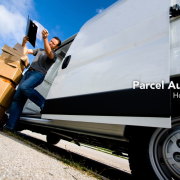That question, and others were the focus of the recent 29th Annual Study of Logistics and Transportation Trends reported by Mary Holcomb, PH.D., professor, University of Tennessee; Christopher Boone, PH.D., assistant professor, Mississippi State University and Karl B. Manrodt, PH.D., professor, Georgia College and State University.
The key questions posed in the study were a direct result of factors highlighted in Tom Goodwin’s book, “Digital Darwinism,” including “The most profound and the very best questions we never dare to ask are: What would your business look like if it was created today? What would it do? How would it do it?”
Digital Darwinism suggests that companies were historically designed to evolve and improve over time. But in today’s world, technology and societal change no longer afford businesses that luxury. Therefore, companies must challenge themselves to ask the hard question, are we willing to change?
The study’s respondents numbered just under three hundred and the results were very interesting. When asked to balance cost and service, just over 54% of the respondents claimed their strategy was a balance of cost and service objectives, defined as “being all things to all people.” 13% responded their focus was on product and market innovation, 27% stated their focus was on Customer Service and 6% stated they were focusing on Cost Leadership.
When asked about striving to achieve maximum profitability, 36% of the respondents stated that maximizing profitability was critical, 30% stated increasing customer satisfaction was their goal, 12% stated they were focusing on maximizing asset utilization and 22% stated they were focused on reducing costs.
The study also revealed that in the prior three year’s surveys, the two competing objectives were “increasing customer satisfaction” and “reducing costs.” In the current study however the goal for 39% of the respondents was “maximizing profitability” an increase of nearly 29% over the prior year’s study results. On the other side of the coin, “increasing customer satisfaction” and “reducing costs” both declined 8.5% and 18.9% respectively. I don’t know about you, but the responses from this year and prior year surveys all seem to be sending a very similar message, but perhaps saying it a little differently.
No matter how you slice these survey results, it is quite clear that continuing the ongoing effort to optimize the transportation and logistics processes in business today requires a strong focus on balancing cost and service offerings, while at the same time striving to achieve maximize profitability.
However, due to Covid-19 challenges, some of these corporate initiatives will surely be tested as to their overall effectiveness in achieving a company’s goals. For example, when a company states that their main objective is balancing cost and service, how easily will that be accomplished when capacity issues are driving up costs significantly? Clearly, shippers have been and will continue to pay more for various transportation services.
Does reducing costs mean selecting carrier partners who’s service offerings are less than stellar, but does provide a reduction in shipping expenses? And, if that is the case, how does that play into providing the best possible service to its customers.
Maximizing profitability has its own set of challenges including first and foremost understanding exactly what a company’s current transportation and logistics expenses are so they can actually benchmark how profitability improvements are effecting their company.
And while this is a pretty basic place to start, many companies still struggle with getting their arms around all of their costs when various facilities and/or multiple divisions are part of the company structure.
In a recent discussion with a new client, they indicated that their overall spend was in excess of $500,000 annually, however when we began gathering the actual shipment data, one of their shipping facilities alone accounted for over $800,000 in annual expenses. So, how can you track and/or improve profitability if you don’t even know what the current expenditures are?
Another point worth mentioning is the corporate structure alignment and which group or groups have responsibility for the overall transportation and logistics expenses. In many companies the responsibility is shared and therefore the decision making process on what steps to take to improve profitability can cause additional challenges that sometimes never have a proper solution and therefore the company profits never really do get optimized.
So where does all of this leave us? Great question! We suggest a “getting back to basics” approach where the starting point must be to pull out all of the stops necessary to effectively address the following issues:
- Is the company absolutely sure it has calculated all of the transportation and logistics expenses it is responsible for?
- Is the company sure that it has billed out all of the proper costs to its customers that may be part of their prepaid and add sales terms?
- Is the company sure that all of their vendors have paid all of the freight costs they are responsible for paying?
- Is the company sure that their purchase and sales terms as they relate to transportation and logistics costs are being properly adhered to?
- Has the company engaged an independent third party audit firm to audit all of their invoices, not only for correctness of charges, but also for duplicate payment and duplicate billings, as well as for freight term considerations?
While these sound like and actually are good and basic business practices, there are many companies that have not taken these steps into account and therefore cannot be assured that their profit maximizing efforts will ever actually be met.








